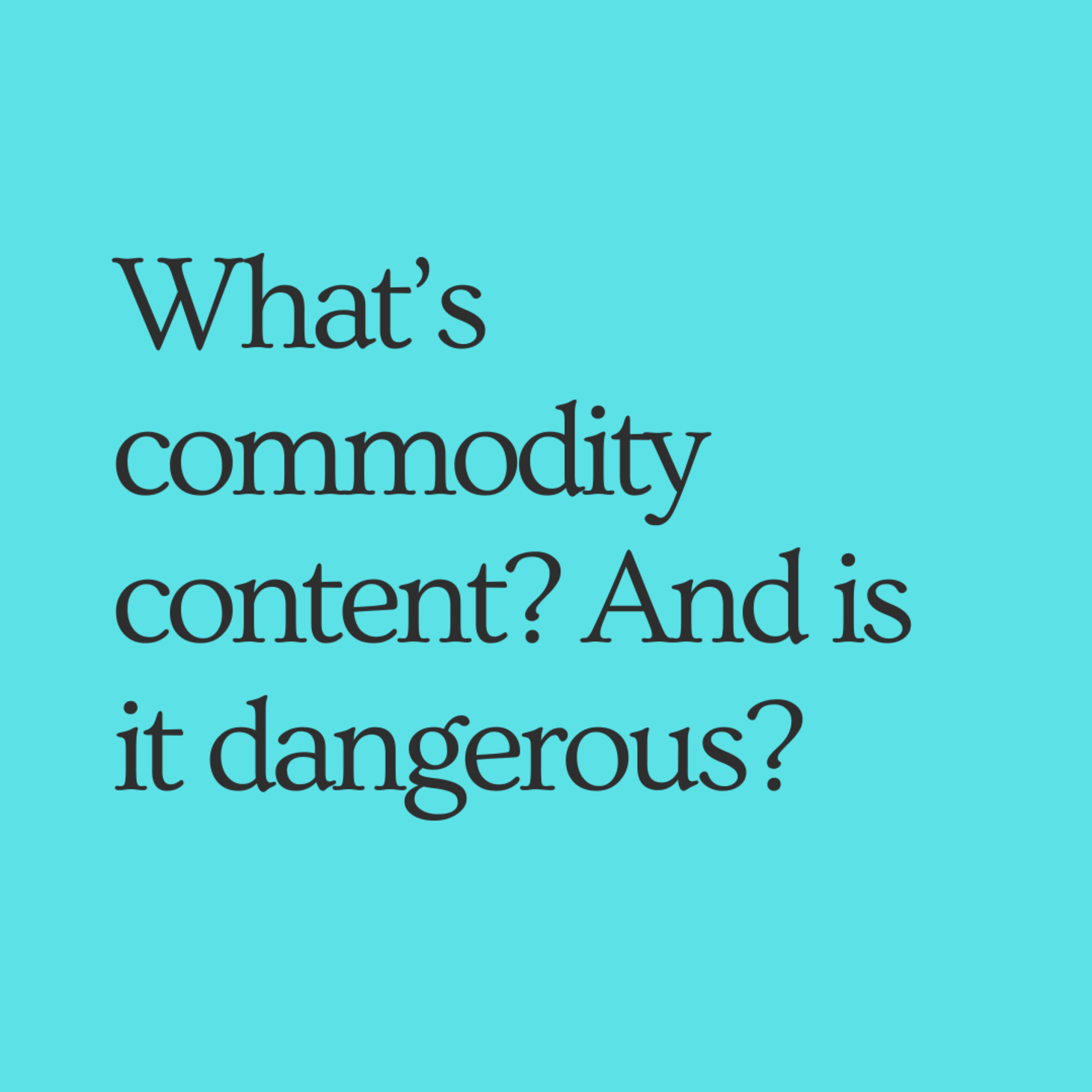 Prologue
Prologue
I’ve been contemplating the voices in my head.
Don’t gawk.
You have them, too.
The ones that can guide you as you write, revise, and publish.
Are they asking the right questions?
Here’s a good test for building a truly recognizable brand identity and voice in your newsletter:
When you draft the content, ask:
“Is this unique to my newsletter?
Could just anyone say it this way?”
If you want to stand out, don’t blend in.
So cliché, I know.
But there’s value in writing something a reader will remember as YOURS.
Think about an artist you’d recognize just by seeing their work.
A musician.
A television producer—for me, this is Amy Sherman-Palladino. The Marvelous Mrs. Maisel is Gilmore Girls 3.0.
She has a style that is uniquely hers.
Almost impossible to mimic.
Confession: this is hard.
I don’t always listen.
When I do, I tap into telling a story the way only I can.
With vulnerable details.
And pauses that prompt my reader (you) to think.
Absorb.
Connect.
I bring a lesson into the process.
And save a little surprise for the end.
Like the fact that my grandmother once heard so many voices that she underwent electric shock therapy, which didn’t work.
So her doctor advised she take up smoking.
I don’t smoke.
I try to listen to the voices. 😉
What do yours tell you?
Today’s issue includes some inspirational newsletter industry voices you’ll want to consider.
Marketing

Do You Publish Commodity Content?
In this article, Molly Donovan explains the difference between commodity content and proprietary content.
Commodity = answers a question or fulfills a need without forming a meaningful relationship between reader and brand.
Proprietary = takes readers on a transformational journey they attribute to the brand that provides it and might be considered refreshing, original, entertaining, inspiring, or educational (or all of these).
Molly writes that there is danger in creating commodity content (think listicles and brand blog content that doesn’t distinguish itself from competitors who could just as easily create the same content) because it fails to further a brand’s relationship with readers.
“With every piece of content designed to provide a quick answer or solution, you lose an opportunity to form a deeper relationship with your audience. With every blog post you write or podcast episode you produce that customers could get anywhere, you dilute the value of your brand’s unique voice and perspective.”
This reminds me of the question of whether a curated newsletter creator should include commentary. Obviously, I prefer to add some context, but I’ve spoken with others who prefer to just include links and less opinion. I think it ends up being an issue of whether the collection of links you choose to include speaks for itself or needs more insight from you.
I also think this a topic we’ll see surface continually in this age of content saturation.
Related: Check out How Content Marketing Became So Saturated by Timothy Carter, which offers some ideas for standing out and ranking.
Publishing
News Publishers are Bundling Subscriptions with Brands
The benefit of connecting publisher and non-publishers together through this subscription bundling model goes beyond the top-line subscription revenue grab and the membership perks that a company’s customers get with the access to free subscriptions, according to James Henderson, CEO and co-founder of subscription software company Zephr.
“People often think it’s just about driving subscriptions, but it’s not. It’s about driving to a connected relationship where you continue to earn the right to be connected, but you are the business that can leverage the first-party data relationship,” Henderson said.
Top Subscription Growth Strategies
This article by Faisal Kalim rounds up some of the advice found in the WAN-IFRA’s recently published report, Reader Revenue: Subscription Marketing.
It looks like
...“investing in data and digital reader revenue are the top two priorities for nearly 90 publishing executives worldwide, according to WAN-IFRA’s latest World Press Trends Outlook data.”
Click through to learn more about the strategies European publishers plan to use to achieve subscription growth goals this year.
Related: Check out Local News Outlets Boost Digital Subscriptions by About 50% in a Year.
Is Your Newsletter Writer a Host?
Learn why publishers are calling newsletter writers “hosts” and “anchors” now. It ties into the idea of tying a personality to publications. I’m suddenly feeling hostly (is that a word?).
 Curated News
Curated News

User Permissions Are Now Tied to Publications, Not Accounts
Curated users will be excited to know that we’ve just released some improvements that give you more control over what users within your account can access.
With these permissions, you’ll be able to invite users to individual publications. (Note: You’ll continue to be able to invite unlimited users to contribute.)
This is especially helpful for you agency owners who have publications for clients and want to keep the individual publications separate.
Watch this quick tutorial video to get started.
 Opt In Challenge
Opt In Challenge
Audit Your Advertising Spend & Adjust
Rand Fishkin thinks something is rotten in online advertising. In this article he breaks down the dirty math behind why he thinks advertisers pour money into campaigns that yield pretty unimpressive results: higher valuations.
Your Opt In Challenge this week is to audit your advertising spend with Rand’s opinion and ideas in mind. Towards the end he offers some alternative placement options, including email newsletters, which I’ve noticed Ahrefs doing recently.
Have a great week, y’all.

